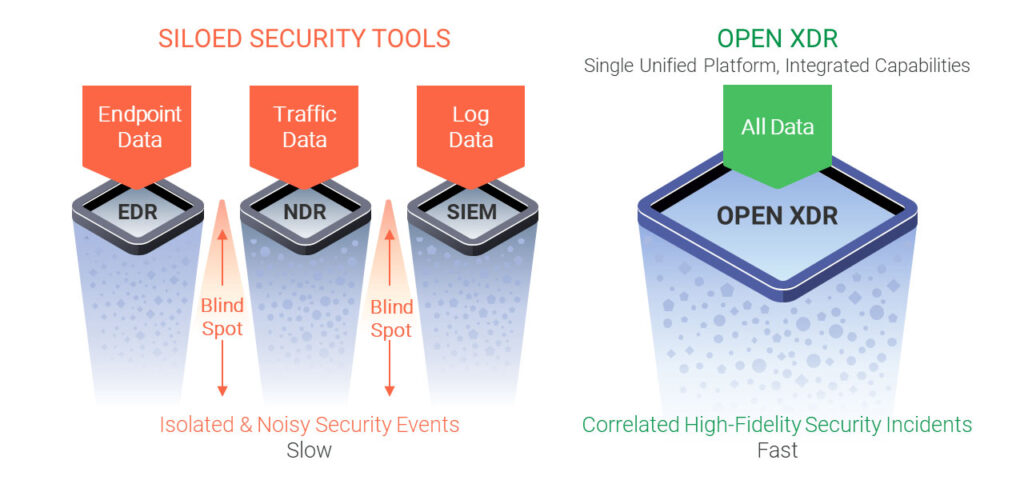Open XDR, AI, and Machine Learning
ATLAN TEAM
In today's rapidly evolving digital landscape, cybersecurity threats are becoming increasingly sophisticated and complex. To combat these challenges, organizations are turning to advanced technologies like Open XDR (Extended Detection and Response), Artificial Intelligence (AI), and Machine Learning (ML). Let's explore how these innovations are transforming the cybersecurity landscape.
- Open XDR: A Comprehensive Approach
Open XDR is at the forefront of cybersecurity innovation. It integrates AI and ML to anticipate and prevent cyber threats before they materialize. By orchestrating various security tools and correlating data from multiple sources, Open XDR provides a 360-degree view of an organization's security landscape. This holistic approach enables more accurate threat detection, correlation, and personalized alerts.
- Endpoint Detection and Response (EDR)
EDR solutions have become crucial in protecting vulnerable endpoints like desktops and mobile devices. The integration of AI and ML into EDR systems enhances their ability to process complex data, recognize patterns, and automate threat detection processes. This integration allows EDR systems to not only identify known threats but also predict potential vulnerabilities, creating a more resilient cybersecurity ecosystem.
- Intrusion Detection Systems (IDS)
IDS, enhanced by AI and ML, can now analyze complex data volumes more accurately. These advanced algorithms reduce false positives and can detect anomalies that might indicate new or emerging threats. When integrated with Open XDR, IDS becomes part of a comprehensive, proactive security strategy.
- Security Information and Event Management (SIEM)
SIEM systems, powered by AI and ML, offer advanced analytical capabilities. They can extract complex patterns from security logs and alerts, identify anomalies, and reveal hidden correlations that might indicate coordinated attacks or insider threats. AI-enhanced SIEM systems also provide automated prioritization of alerts, ensuring critical issues are addressed promptly.
- Active Directory (AD) and Cybersecurity
AI and ML algorithms can analyze AD data to detect anomalies like unusual login patterns or unauthorized changes in user privileges. This capability is crucial for identifying insider threats or compromised accounts. When integrated with Open XDR, AD data contributes to a more comprehensive threat detection and response system.
- Application Logs and Open XDR
Applications generate vast amounts of log data. Open XDR platforms use AI and ML to analyze these logs in real-time, detecting patterns and anomalies that might indicate security breaches. This automated, real-time analysis allows for rapid identification and response to potential threats.
- Log Forwarding and Centralized Analysis
Centralized log management, combined with AI and ML, provides a holistic view of an organization's digital environment. This integrated approach allows for more advanced security analyses and the detection of complex attack patterns. AI-driven predictive models can even anticipate potential threats before they occur.
The synergy between Open XDR, AI, and ML is revolutionizing cybersecurity. By providing comprehensive, real-time threat detection and automated response capabilities, these technologies are enabling organizations to stay one step ahead of cyber threats. As the digital landscape continues to evolve, the integration of these advanced technologies will be crucial in building robust, proactive cybersecurity strategies.

